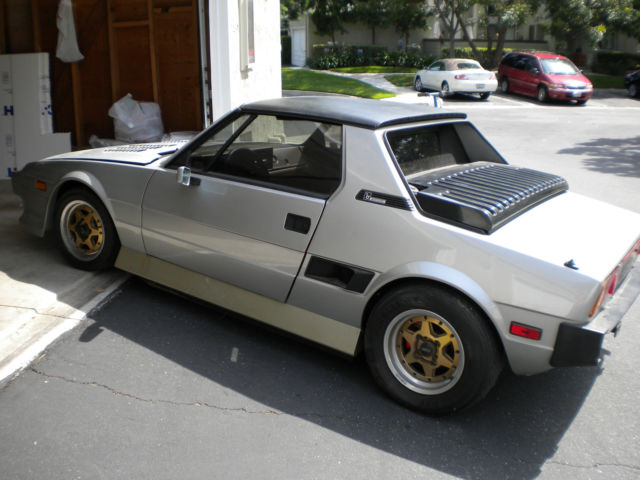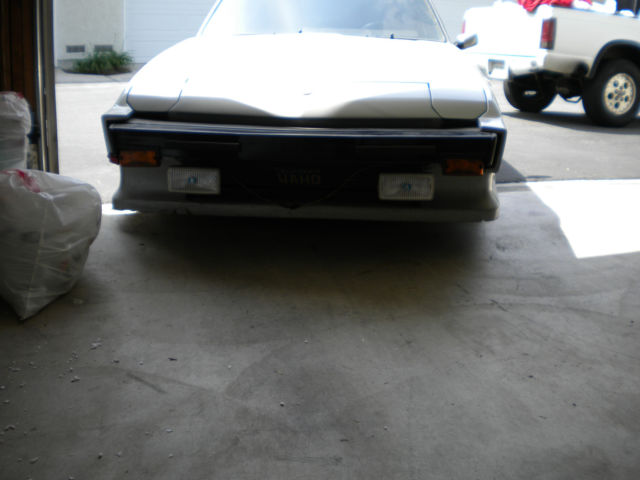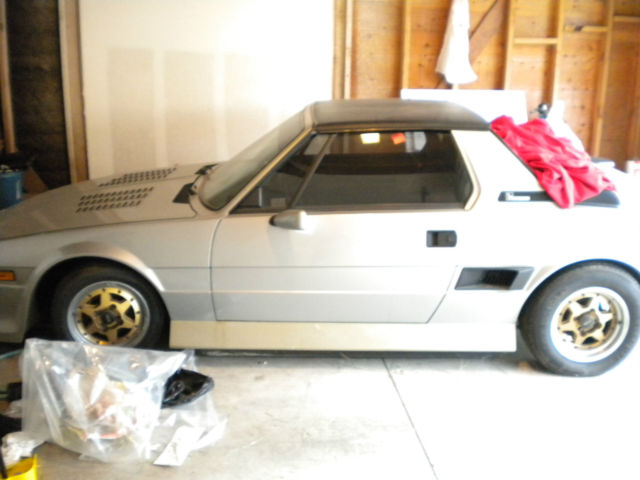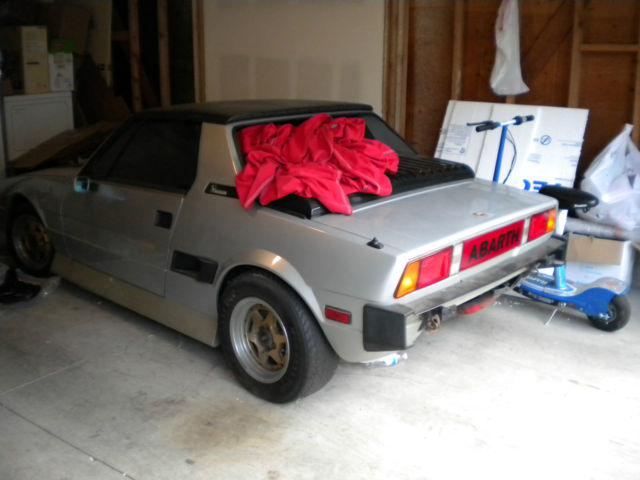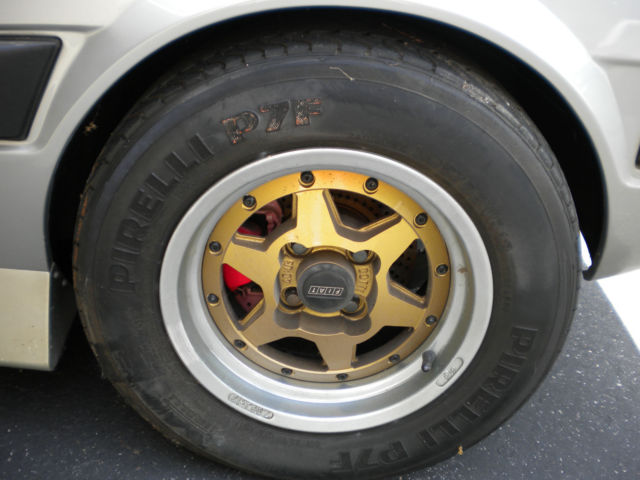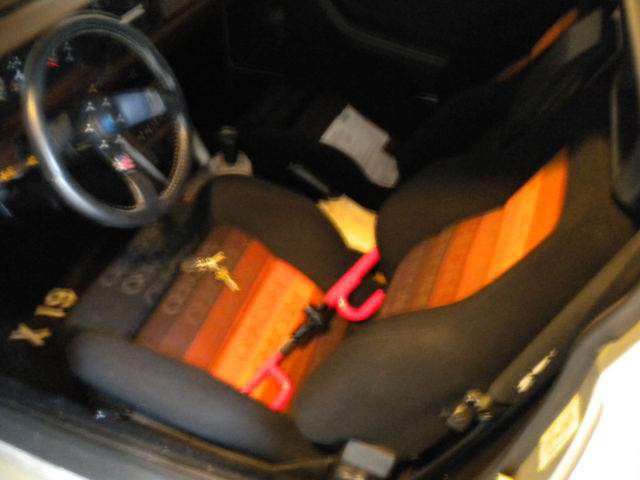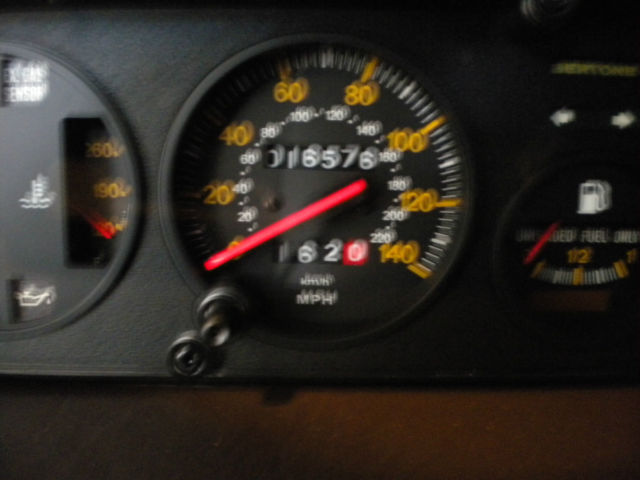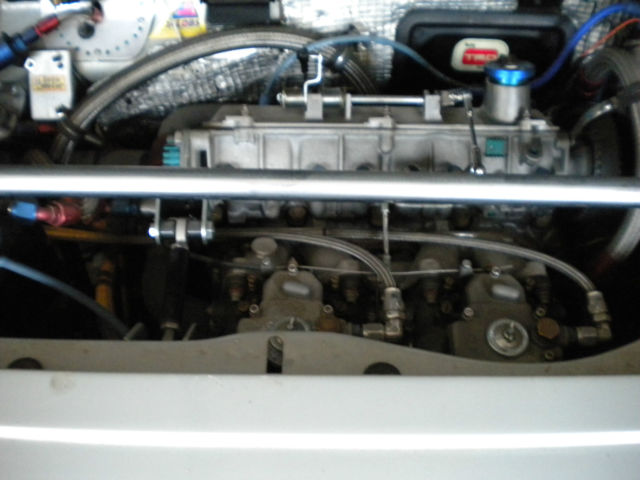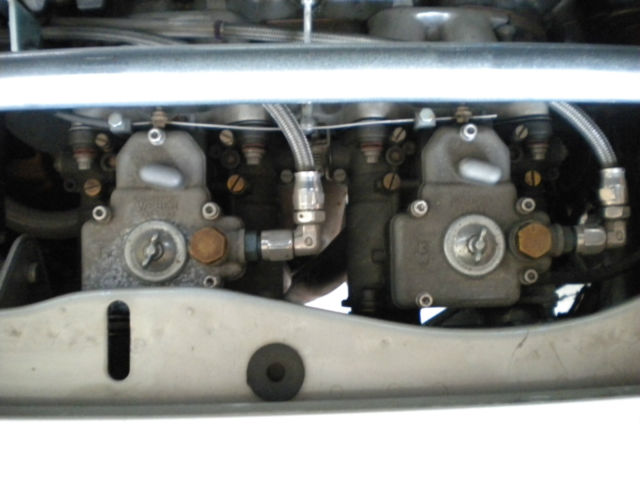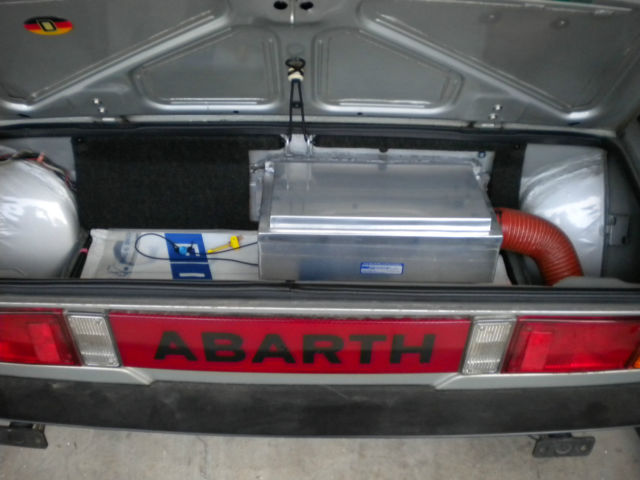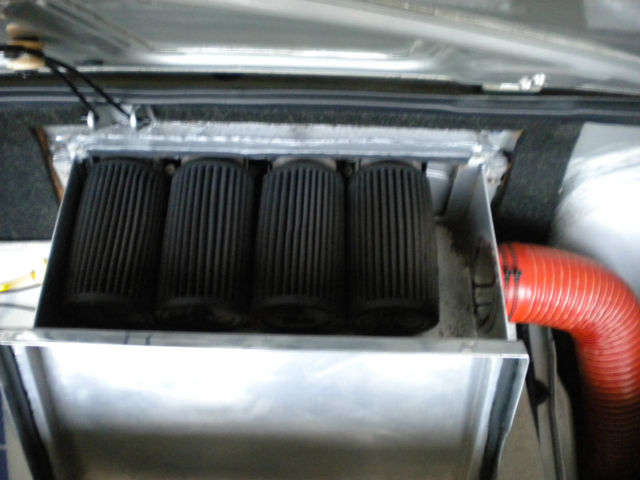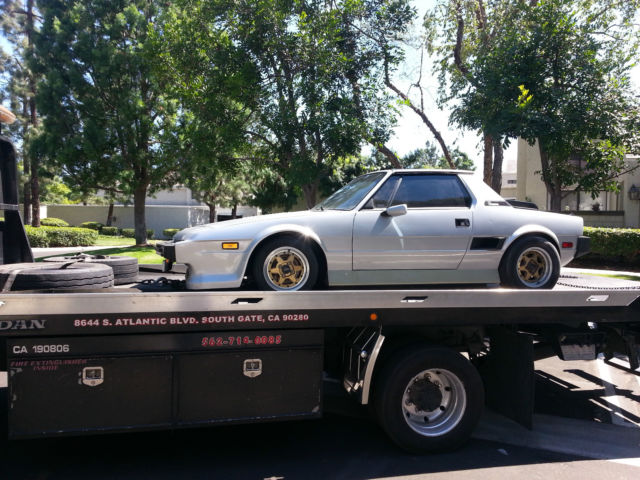WHO PUTS THE HOT IN FIAT "P.B.S."
- Condition: Used
- Make: Fiat
- Model: X1/9
- Type: Coupe
- Trim: TARGA
- Year: 1979
- Mileage: 16,576
- VIN: 128AS10100078
- Color: Silver
- Engine size: 1600 PBS Stroker kit
- Number of cylinders: 4
- Fuel: Gasoline
- Transmission: Manual
- Drive type: RWD
- Interior color: Brown
- Options: Cassette Player
- Vehicle Title: Clear
- Interested?
1979 Fiat X1/9 Description
VIN #128AS10100078
YOU ARE BIDDING ON A 1979 FIAT X19 1600CC FULL P.B.S. ENGINE CONVERSION. BORED, PORTED, POLISHED AND BLUE PRINTED. I BOUGHT THE CAR NEW AND ABOUT A YEAR OR SO LATER I GAVE P.B.S. THE GO AHEAD. WORK DONE AS FALLOWS:
TRUE MILES 16,576
BIG VALVE HEAD
STROKER CRANK (1600CC)
RACING CAM S1??
HEADERS
TWIN 45 DCOE WEBER CARBS
LIGHTENED EVERYTHING THAT COULD BE
UPGRADE PISTONS & RODS
NAS BOLTS
AEROQUIP
AND MUCH MORE
TOTAL $ 9,000 +
BODY:
SILVER + CLEAR
MANY PARTS CHROMED (BLACK), POLISHED, POWDER COATED, FROM TOP TO UNDER
GOLD & CHROME GOTTI WHEELS
LOUVERS
GLASS AND METAL EMBLEMS
ABARTH REFLECTOR
INTERIORS:
ENGLISH WOOL CARPE
RECARO SEATST
PERSONAL STEERING WHEEL
ALUMINIA ANTI SKID PADS (ACC, CLUTCH & BRAKE)
V.D.O. GAUGE
SUSPENSION:
MOST, NOT ALL, RACED OUT
SWAYBARS
BRAKES:
FRONT, RABBIT GTI DRILLED
REAR, OEM DRILLED
PBS X1/9-128 RACING MODIFICATIONS
This brochure covers many of the modifications which PBS has developed for the Fiat 128 and the Fiat/Bertone X1/9.
The 128 series engines were first imported into the U. S. in 1971 as an 1100cc engine in the Fiat 128 sedan. This engine has a bore of 80mm and a stroke of 55.5mm. The single overhead cam head, with in-line valves, has all eight ports on the same side of the head. The intake valves are 36mm in diameter and the exhaust valves are 31mm in diameter. A single throat Weber carburetor and a single outlet cast iron exhaust manifold are employed on the '71-73 128 sedans.
In 1973 the 128SL coupe introduced the 1300cc version of the S.O.H.C. 128 series engine. This engine has a bore of 86mm and a stroke of 55.5mm. The crank is identical to the 1100cc crank. The cylinder head is basically the same as the 1100cc head except for having a larger combustion chamber to compensate for the larger displacement. While the bore spacing is the same on the 1100cc and 1300cc blocks, the 1100cc block cannot be bored to 86mm because the water jacket cores are different and the 1100cc cylinder walls are not thick enough to allow a 6mm bore increase.
In 1974 the X1/9 was introduced to the U. S. with the 1300cc engine. The `74 X1/9 and 128 coupes and sedans were also fitted with two throat Weber carburetors and dual outlet cast iron exhaust manifolds. Also, air injection into the exhaust port was introduced on the `74 models The distributor was changed from the Marelli unit used on the earlier engines to a Ducellier distributor with a vacuum retard device for emission control.
The 128 and X1/9 engines have minor differences. For example, the intake and exhaust manifolds are different because of the engine mounting angles being different. The motor mounts are also different. The X1/9 has a cast aluminum oil pan vs. the 128 sheet metal pan, and the oil pump pickup castings are different.
The `75 through `78 engines are basically the same as the `74 1300cc engine except for a number of minor changes. Most of these are associated with the emission control systems. When catalytic converters were added, the exhaust manifold was changed back to a single outlet design. The two throat carburetors on, these engines are fitted with water heated automatic chokes.
In about 1977 the air injector system was changed. The earlier version, employed four separate inlets into the cylinder head. The later system uses a single inlet which feeds a long drilled passage in the head. This passage extends into the water outlet area on the end of the cylinder head. It is essential to use the later thermostat housing and gasket with the late air injector style head in order to prevent water leakage into the exhaust ports. When water runs out the tail pipe on one of these engines after it has been worked on, the cause usually turns out to be the use of an early type thermostat housing gasket.
The 1979 and later X1/9s and Strada sedans are fitted with 1500cc versions of the S.O.H.C. engine. The bore of this engine is 86.4mm and the stroke is 63.9mm. The 1500cc exhaust valves are enlarged to 33mm from the 1300cc 31mm valves. The intake valves on both engines are 36mm in diameter. The 1500cc connecting rods are steel forgings rather than castings as in the 1300cc engine, but they are also longer than the 1300cc rods. The 1500cc block is taller than the l300cc block to accomodate the longer stroke crank and longer rods without changing the crown height on the pistons.
The '79 1500cc engines are fitted with a small two throat Weber carburetor which has a vacuum activated secondary throttle butterfly. The `79 cars have E.G.R. and an air pump for emission control as well as a catalytic converter. The `80 and later 1500cc engines have Bosch electronic fuel injection systems and no E.G.R. or air pump. Thus the `79 block is the only one with mounting bosses for the E.G.R. system. All of the 1500cc engines came with Bosch electronic ignition systems.
All of the 128-X1/9 engines are relatively short-stroke, large-bore (over square) engines. This allows them to run at high r.p.m. without undue stress or wear on the lower end of the engine.
Breathing is relatively restricted in these engines. The intake ports and valves are basically the same on all three sizes of the engine. The exhaust valves ore the same on the 1100cc and 1300cc engines, while the 1500cc engine has 2mm larger exhaust valves. Unfortunately, performance of these engines is quite insensitive to exhaust valve size. On the other hand, performance is definitely enhanced by enlarging the intake port and valve size. Inlet breathing (volumetric efficiency) is also restricted by the stock carburetors and intake manifolds, or fuel injection systems. The 1974 exhaust systems are the least restrictive of the stock exhausts. This system consists of a cast exhaust manifold with two outlets followed by twin, stainless steel downpipes and a muffler. The earlier and later systems all use a single downpipe. The later systems with both a catalytic converter and a muffler are quite restrictive.
PBS has conducted numerous design and development projects on the various 128-X1/9 engines with the object of enhancing performance for various racing applications. These projects hove included development of 16 valve D.O.H.C. engines based on the 128 1300cc block for SCCA C sports racing, 1200cc S.O.H.C. engines for D sports racing, 1300cc and 1500cc engines for G and F production racing respectively, 1300cc S.O.H.C. engines for GT-5 racing, 1600cc engines with PBS manufactured stroker cranks for slalom racing, etc. The PBS facility includes a casting pattern shop, a complete machine shop (including crankshaft and camshaft grinders, etc.), engine assembly area, and a fully instrumented engine dyno meter. Components for the various racing engine projects are designed, manufactured, assembled and thoroughly tested in- house. Only the parts that really provide useful performance and/or reliability improvements are put into production for sale to our customers.
Our extensive involvement with SCCA racing for over 20 years has allowed us to further develop our products under actual racing conditions. PBS personnel have campaigned Fiat powered cars in Dsr, Csr, Formula C, GT-5, F production and E production. We have worked closely with customers in several other SCCA classes as well.
Initial testing on the 1300cc version of the 128-X1/9 engines indicated that while the addition of more carburetion, exhaust headers, and larger cams did provide some power increase, the end results were rather disappointing. This was particularly true with larger cams which tended to hurt the already anemic low speed torque of the short stroke engine while providing only a very marginal power improvement at high r.p.m. Analysis of the data suggested that the internal breathing of the motor was so restricted that the addition of bolt-on high performance equipment had relatively little effect.
The PBS 128-X1/9 big valve head was conceived, designed, and developed to optimize the breathing of the engine without compromising its basic reliability. Stock cylinder heads were sawed apart to determine casting wall thicknesses, etc. so the ports could be enlarged to the practical limit without danger of cracking into the water jacket. Dyno testing was done on several different configurations to determine the effects of valve size (both intake and exhaust), valve seat size and shape, and combustion chamber shape.
Testing showed that the engine was basically insensitive to exhaust valves and ports, but responded very well to increases in intake port, seat, and valve sizes. The limiting factor is the port size which can only be increased to the point where sufficient wall thickness remains to the water jacket. With the largest practical ports, valve sizes beyond 40mm diameter don't produce any further appreciable performance gains. The intake valve seats must be enlarged to be compatible with the new valves in order to gain any benefit. For applications, such as production class racing, which don't allow valve diameter increases, the ports can still be enlarged. The valve seats can also be enlarged to the point where the valves contact very close to the outer periphery of the valve head. This allows the flow to be optimized within the rules of the racing class. Running the valve contact out to the edge does require frequent replacement of the valves, however. Note that the valve seats must be enlarged on both the inside and outside diameters. Just boring out the stock seats causes them to be weakened to the point where they will frequently fall out of the head after numerous temperature cycles. We have run dyno tests on customers engines which were fitted with big valve heads made in Europe. Some of these had up to 42mm intake valves and larger than stock exhaust valves as well.
No performance benefit was noted for these heads compared with the PBS big valve head. However, in order to accomodate the enlarged exhaust valves, the new valve seats actually overlapped. That is, the intake seat was installed first and the head was bored for the exhaust seat to the point where the cutter actually cut partially into the intake valve seat. This creates a rather weak and uneven support for the two valve seats. The end result is that the seats don't stay accurately positioned in the head after repeated temperature cycling in operation. Thus the valve seal deteriorates after a few hours of operation and the valve seats must be frequently reground.
Once a big valve head has been installed on the 128-X1/9 engine, the performance will respond nicely to increased carburetion, headers, modified cams, etc. However, selection of the proper camshaft is still critical. As with any engine, performance gains at high r.p.m. must be weighed against the performance loss at low to moderate engine speeds. This is more critical with the shorter stroke 1100cc and 1300cc engines than with the 1500cc and longer stroke engines.
After development of the upper end of the l300cc engines, it became obvious that additional torque and power could best be obtained by increasing the stroke of the crankshaft of course, Fiat had this in mind also when it produced the 1500cc engines starting in '79. In the meantime, PBS designed and started production on a 1600cc crankshaft with a 68mm stroke. The PBS stroker crank is a ductile iron casting using material similar to the stock crank. It employs twice as many counterweights as the stock crank, however. This makes the casting process considerably more difficult but the end product is a smoother running engine with reduced main bearing loads. The stroker crank makes a tremendous improvement in low and mid-range torque and allows the use of more radical camshafts without losing low speed flexibility.
PBS offers a number of different cam profiles for these engines. These have been developed over a period of several years through a continuing dyno test program. The extreme over square configuration of the X1/9-128 engine makes it respond best to cams having relatively short duration and high lift. Of course, as the lift is increased, the duration must also be increased somewhat to keep valve opening accelerations within acceptable limits. Also, maximum lift is limited by mechanical considerations such as valve spring compression before coil bind and physical size of the cam lobes, which must pass through the cam bearings for installation.
Table 1 lists the cam profiles which we have found most suitable for use in these engines. Keep in mind that the tendency of most aftermarket suppliers is to promote cams which have too much duration for a given application with these engines. Also, the selection of the optimum cam profile is closely related to other breathing modifications to the head, carburetion, and exhaust system. That is, a more radical cam profile will enhance high speed performance only if the rest of the induction and exhaust systems will allow additional flow. If the head, carburetion, and exhaust are not sufficiently modified for the cam selected, the end result will be a significant loss in low speed performance without the desired level of increased high speed power.
A number of different carburetion systems are available for the X1/9-128 series engines. These include modified stock carburetors for G production racing, the 34 DMTR Weber either stock or modified, twin 40 DCNF-12 Weber carburetors, twin 45 DCOE Weber carburetors, and a single 36 DCNF carburetor for F production SCCA racing. PBS manufactures the intake manifolds for the two twin carburetor systems and sells these manifolds to several other aftermarket parts suppliers.
The 34 DMTR 21/200 Weber carburetor fits the stock intake manifold and is jetted close to optimum for most `74 through `78 X1/9-128 engines with mild performance modifications. This carburetor employs a manual choke and an idle cutoff solenoid and has 2mm larger butterflies than the stock carburetor. It is not recommended for the '79 1500cc engines unless they are also fitted with a big valve head, high performance cam, and exhaust headers and do not have any E.G.R., air pump, catalytic converter, etc. The emission control system on the stock `79 1500cc cars is so complex and interrelated that minor changes, like a larger carburetor, typically cause a net loss in performance as well as defeating the emission system.
Either the stock 32mm carburetor or the 34 DMTR can have the venturis bored to improve high speed breathing. The Project X1/9 book, written by PBS for Fiat, details these modifications for production class racing. One design problem which these carburetors have is that the super-jet, high-speed-enrichment-circuit, pickup port is located high enough in the float bowl that the fuel level drops below it during hard left-hand corners. This causes the carburetor to go lean when the secondary is open. One way to solve this problem is to install a pickup tube, into this port, which extends down to the bottom of the float bowl. This tube can be bent up from 1/8" O.D. copper tubing and filed down to fit snugly in the pickup port. The copper tube can be epoxied in place with a filled, slow curing epoxy such as Devcon plastic aluminum.
The twin 40 DCNF-12 Weber carburetor setup, with the PBS manifold and linkage kit, provides a substantial breathing improvement when used with a big valve head, high performance cam, and exhaust headers. These carburetors fit under the stock engine lid with no body interference problems. They do have to be set up slightly rich on the idle circuit to provide a smooth transition from idle to the main circuit under acceleration. This means that fuel economy will suffer somewhat under light load cruising conditions, since, with four 4Omm butterflies opening at once, most low to moderate speed cruising will be done on the idle circuit.
The ultimate carburetor setup for the 128-X1/9 engines, from a performance standpoint, is a pair of 45 DCOE side-draft Webers. Unfortunately, however, they won't fit in either the 128 or X1/9 cars without modifications to the car for clearance. In the 128, the heater inlet box must be removed or at least cut down for clearance. The X1/9 installation requires cutting clearance into the rear trunk area for the carburetor air horns and filters. The box member, across the top between the engine bay and the trunk, must be cut out along its bottom for clearance. Then a piece of sheet steel must be welded back in higher up to box in this area for structural integrity. Customers who have tried both the 40 downdraft carburetors, and the 45 side-draft installation, say that the extra performance of the 45 side-drafts easily justifies the extra effort required for installation. In addition to allowing somewhat better breathing at high speed than the downdraft carburetors, the DCOE carburetors are also less sensitive to cornering, etc. The same comments about low speed fuel economy apply to these carburetors as well as the twin downdrafts, of course.
The single 36 DCNF Weber carburetor is allowed for SCCA F production racing with the 1500cc X1/9. This carburetor can be setup to,work for racing on the stock manifold. Since its throttle shaft is at 90 degrees to the stock carburetor configuration, part throttle distribution between cylinders suffers somewhat. The mounting holes in the manifold must be relocated and the throttle linkage must have a bell crank added. We use on accelerator pump from a 40 DCNF carburetor and relatively rich jetting in order to get enough fuel to compensate for its poor part throttle and acceleration fuel distribution. At wide-open-throttle, it will make a little more power than a bored out 34 DMTR carburetor, which is the other legal carburetor for this class. Also, it seems to work a bit better in hard cornering than the DMTR carburetors, although it should run richer one direction and leaner the other direction because of the float bowl configuration.
PBS sells a four branch, mild steel tubing exhaust header made from 16 ga. tubing. This was developed for racing on the X1/9. It will work with either the 1300cc or 1500cc blocks. Since the header was designed for racing, it terminates in a 2" diameter collector with a three bolt flange. A mating flange is supplied. This can be fitted with a 2" O.D. tailpipe, and a muffler if required. If a muffler is used, it must be adequately supported so it won't break the header due to shock and vibration. The exhaust header is not suitable for use with the air injection, emission control system. Also it will not fit cars which have air conditioning. The header does not have any provision for a Lambda sensor as used on the Bosch fuel injected cars.
The stock oil system in these engines is quite adequate for completely stock cars, but high performance modifications and very hard driving can cause problems with oil control. The stock oil pressure is about 55psi at high r.p.m. For racing, we recommend about 10psi per thousand r.p.m. PBS offers a high pressure oil relief spring which raises the maximum output pressure of the stock oil pump to about 85psi.
The stock Fiat oil pressure sender and pressure gauge frequently don't read correctly. However, we have never seen one that read higher than the actual pressure. In general, they read low, especially when thet get old.
Cars which are equipped with wide wheels and tires, and are driven hard in corners, need special attention to the oil control system. If the oil moves away from the oil pump pickup during cornering, and an air bubble is picked up by the pump, the rod bearings can be destroyed almost instantly. PBS sells a special, sheet steel oil baffle which fits between the oil pan and the block. This is available either for use with the stock oil pump, or in a version suitable for use with a dry sump system. The purpose of the extra oil baffle is to keep the oil from climbing the walls and getting picked up by the crankshaft. We have seen as much as a 40bhp power loss, in dyno testing a racing engine, when the oil got out of control and was churned up by the crankshaft. By controlling the oil in the pan with this baffle, the oil level can safely be run higher than normal, with a wet sump system. We recommend running one extra quart of oil with this baffle and being sure to maintain the higher level between oil changes. When installing this baffle, we use two 128 pan gaskets, one on each side of the baffle. 128 pan gaskets are thicker than X1/9 pan gaskets and provide a better seal. Longer pan bolts are also recommended to allow for the extra gasket and baffle thickness.
PBS also manufactures and sells a dry sump oil pump with a mounting bracket and toothed belt drive system. This pump, in conjunction with the oil baffle, dry sump oil pan and a dry sump tank provides the ultimate in oil control for racing. The Project X1/9 book gives more detail on this system as applied to the X1/9. The dry sump pump is designed to replace the alternator so it would not be practical for applications which also require an alternator.
These days, no discussion of high performance modifications would be complete without addressing the pros and cons of turbocharging the engine in question. The Fiat X1/9-128 series engines will respond nicely to forced induction via turbocharging if it is done correctly. They will also self-destruct in short order if it is not done correctly. Over the past 10 years, PBS has conducted a number of dyno test programs on turbocharged 1300cc, 1100cc and 1600cc versions of this engine. We have also done custom turbo installations in a few X1/9s. Initial dyno experiments typically resulted In blown head gaskets, melted pistons, and disappointing performance. It became readily apparent that adequate detonation control is essential, with this engine, to achieve any measure of reliability. Dyno testing also showed that even with the extra induction boost of a turbo, the breathing of this engine is restricted enough that some additional help in the form of a higher lift cam is beneficial. Our SX-1 or S-2 cams provide substantially better results than the stock cam. Excessive valve over- lap with a turbo, of course, allows the mixture to blow right through and out the exhaust port. The best combination of all around high performance and reliability, with a turbocharged, carbureted X1/9 engine was achieved with an Air Research T-3 turbo with a waste gate, drawing through a modified 34 DMTR Weber carburetor. This engine was set up with our 1600cc stroker crank in a 1500cc block using 7 to 1, low compression, forged pistons. The ignition was retarded under boost for detonation control. This engine produced a reliable l40bhp with moderate boost (7 to 9psi ), and had excellent mid- range torque. The special exhaust manifold was fabricated from schedule 40, weldable gas pipe. We have also conducted extensive testing on the Bosch fuel injected 1500cc engines with an RHB5 size IHI turbo using an integral waste gate. A fabricated exhaust manifold was used which allowed the turbo to exhaust through the stock system including the catalytic converter and muffler. Fuel enrichment was obtained by switching resistance into the cold running fuel injection circuit under boost. This setup produces a moderate performance increase reliably. However, if the exhaust is opened up the boost will increase beyond safe limits even with the integral waste gate wide open. The power increases also, but a larger waste gate would be required to prevent destructive detonation.
As of this writing PBS doesn't offer a bolt on kit for turbocharging the X1/9-128 cars. We don't know of any available aftermarket kits which we can recommend either. Turbos can be installed on a custom basis, but this is quite expensive and must be done carefully to avoid severe reliability problems.
Another frequent question we get involves the desirability of putting a 124 Fiat series twin cam engine into the X1/9 car.
Our typical reply is that almost anything is possible but that some combinations are not very practical. Several people have put twin cam engines in X1/9s. The X1/9 driveline is marginal for the torque produced by the larger 124 series engines. The X1/9 clutch is totally inadequate for the 124 and most proposed solutions to this problem seem to create other problems. Another approach which has been used is to graft the entire driveline from a Lancia Scorpion into the X1/9. This requires major fabrication effort, however. Also, as far as bhp is concerned, the 124 engine would require substantial modification to match or beat a well tuned and modified X1/9 engine. Thus, unless you need more than 150bhp, it is more economical and far easier to modify the existing engine than to fit another type of engine to the car.
Chassis modifications for racing with the X1/9 are covered in considerable detail in the Project X1/9 book written by PBS. Many people ask about minor modifications to improve handling, etc. without the major fabrication effort outlined for production racing. PBS doesn't sell parts for such modifications, but we can offer some suggestions. The early `79 and the '74 through `78 X1/9 cars were originally fitted with struts which could be disassembled and rebuilt. Fiat no longer supplies internal parts for these and has superseded them with welded assemblies for replacement. However, aftermarket replacement shock inserts are available which will fit inside these early original equipment struts. KYB sells low cost inserts which fit these struts and are valved closer to a racing shock. That is, they are quite stiff on jounce as well as rebound.
The X1/9, as imported to the U. S. is set up with the front end of the car relatively high. If you have the early take-apart struts, the lower strut bracket can be cut loose and moved up the strut 15/16" and rewelded in place. This operation is described in Project X1/9. This will lower the front of the car without altering the available strut travel or the spring rate, etc.
A great number of aftermarket wheel and tire combinations are available for these cars. In general, we don't recommend any wheels which have straight through mounting holes and use shouldered nuts or bolts for wheel fastening and location. In our experience, these wheels don't index accurately enough, especially after they have been removed and replaced several times. Thus, they don't run true and cause excessive vibration. Most of the Italian made wheels, Momo, Cromodora, Speedline, etc. have tapered mounting lug seats like the stock wheels and do a much better job of centering properly. Wider than stock wheels and tires generally do improve cornering adhesion, but they also typically create more drag. Excessively wide tires can cut the top speed of one of these cars by as much as 10 to 15 mph. Changing the diameter of the drive tires will, of course, effectively change the gear ratio of the drive train.
Project X1/9 describes anti-roll bars which we use for racing the X1/9. These are custom built and the front one fits through the front trunk so that ground clearance is not reduced. These are not recommended for street modified cars. Note that a rear sway bar will tend to lift the inside rear wheel during cornering and cause it to spin unless a limited slip differential is used. A front sway bar, alone, will tend to cause understeer. Most aftermarket sway bars, for the front of these cars, are designed to clamp onto the stock front trailing links. We don't recommend this practice, because this puts bending stresses on the ends of the trailing links which they are not designed to handle.
Various aftermarket camber adjusting devices are available. We use Carrera units for racing, but they are designed to work only with Carrera shocks and require some fabrication work to adapt to the Fiat shock towers. Some aftermarket units are designed to bolt into the top of the stock shock tower and provide camber adjustment by rotating the unit to different positions. Unfortunately, the eccentric feature of this design causes the caster to change as well as the camber. This can cause problems with the front end geometry.
One way to change the camber on these cars is to slot one of the holes on the lower strut bracket to allow movement of the spindle assembly relative to the strut. We load the car as it will be driven and then carefully measure the camber with the car on a level surface. The struts can then be removed and the amount of slotting required for a given change can be calculated using simple trig, The hole can be machined, or even filed, appropriately. Then we weld heavy washers back over the holes in the new location. A slightly longer bolt is fitted on re- assembly to allow for the thickness of the additional washers. The Project X1/9 book gives additional information on this subject
PBS does offer special ratio gear sets for the X1/9 and 128 gearboxes. These are modifications of the stock transmission parts which involve welding different gears on, in place of the original ones. These gears have straight cut teeth and are only recommended for racing. The Project X1/9 book describes the transmission modifications.
The 128 sedans and coupes con be lowered somewhat by swapping of stock Fiat parts. The early Fiat X1/9 rear strut assemblies will fit on the front of the 128. These are shorter and hence will lower the car. They also introduce some negative camber into the front which reduces the stock understeer. The whole assembly can be used, including the spring, but two of the upper mounting holes must be redrilled to match the X1/9 top mount. Alternatively, the upper 128 strut mount can be put onto the X1/9 strut assembly. Be sure that you get the early X1/9 strut which allows rotation of the strut relative to the top mount for steering. The 128SL coupe rear struts are about one inch shorter than the sedan struts and can be fitted to the sedan. This will not alter the ride height but it will allow more travel after the rear has been lowered.
To lower the rear end of either the 128 sedan or coupe, lowering blocks or spacers are added between the lower control arm and the strap at the end of the traverse leaf spring. Spacers about 1-5/8" long work nicely on the back in conjunction with the X1/9 rear struts on the front. The studs which mount the spring straps must be knocked out and replaced with longer bolts, to accommodate the new spacers. The bracket which connects to the rear brake load compensator should be connected under the new spacer, to maintain the proper brake bias.I WILL SEND ALL THE PICS YOU WANT, THANKS MARK 949 241 7516
PAYMENT: $500.00 PAYPAL (48hrs) THE REST IN CASH (7 Days)!!!!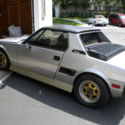 WHO PUTS THE HOT IN FIAT "P.B.S."
WHO PUTS THE HOT IN FIAT "P.B.S."
Mileage: 16,576
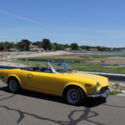 1970 FIAT 124 SPIDER "FULLY RESTORED, THE BEST ON THE MARKET, GORGEOUS CAR!!!"
1970 FIAT 124 SPIDER "FULLY RESTORED, THE BEST ON THE MARKET, GORGEOUS CAR!!!"
Mileage: 34,700
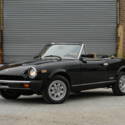 1983 fiat Pininfarina spider amazing only 23K mi "Originale" base restoration
1983 fiat Pininfarina spider amazing only 23K mi "Originale" base restoration
Mileage: 23,000
 1983 fiat Pininfarina spider amazing only 23K mi "Originale" base restoration
1983 fiat Pininfarina spider amazing only 23K mi "Originale" base restoration
Mileage: 23,000
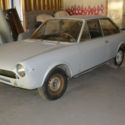 1968 Fiat 124 Coupe ... RARE "AC" Model
1968 Fiat 124 Coupe ... RARE "AC" Model
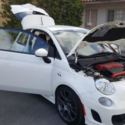 fiat abarth 190 WHP "sleeper" - $6000 invested!
fiat abarth 190 WHP "sleeper" - $6000 invested!
Mileage: 28,340
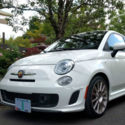 2013 Fiat 500 Abarth 16k, Leather, Heated Seats, Beats audio, Auto Temp, 17"
2013 Fiat 500 Abarth 16k, Leather, Heated Seats, Beats audio, Auto Temp, 17"
Mileage: 15,930
 2013 Fiat 500 Abarth 16k, Leather, Heated Seats, Beats audio, Auto Temp, 17"
2013 Fiat 500 Abarth 16k, Leather, Heated Seats, Beats audio, Auto Temp, 17"
Mileage: 15,900
 2013 Fiat 500 Abarth 16k, Leather, Heated Seats, Beats audio, Auto Temp, 17"
2013 Fiat 500 Abarth 16k, Leather, Heated Seats, Beats audio, Auto Temp, 17"
Mileage: 15,900
 2013 Fiat 500 Abarth 16k, Leather, Heated Seats, Beats audio, Auto Temp, 17"
2013 Fiat 500 Abarth 16k, Leather, Heated Seats, Beats audio, Auto Temp, 17"
Mileage: 15,900
